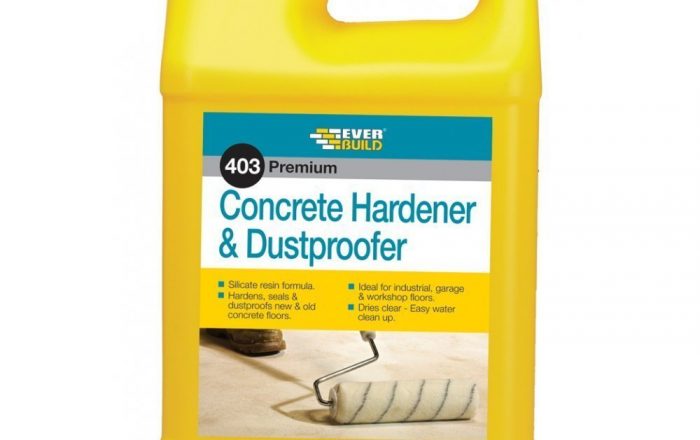THE BEST GARAGE FLOOR PAINTS FOR A SMOOTH FINISH
A garage is more than a shelter for a vehicle, it’s an extension of your home. That being said, most homeowners give minimal attention to this space. White walls and a painted door is the usual approach for many garage renovation projects.
But a garage doesn’t have to lack personality and such a change can start with the floors. All it takes to give a new lease of life to the environment is a tub of floor paint.
Garage floor paint must have two qualities: resistance and durability. Finding the right one is not easy, and that’s why our expert team has tested and rated several products available in the UK market. Check out our top picks below.

OUR BEST PICK GARAGE FLOOR PAINTS
POPULAR GARAGE FLOOR COLOUR PALETTES
Garage floors are usually made of concrete and the best paints to use are the epoxy-based products. Grey is one of the most popular colours and its choice is often dictated by practicality. But grey isn’t the only way to go.
Bright blue replaces the traditional grey with success, adding luminosity to a darker environment. Green is another lovely colour to consider. A darker shade of green may complement a garage that doubles as a home workshop.
Red is a vibrant colour. Pair it with black to create a striped or chessboard pattern. With the same colours, you can recreate the floor of an industrial garage, just for the fun of it.
Yellow and black is another popular colour palette inspired by industrial garages. A chessboard white and black, maybe paired with Ferrari red walls, will make your garage stand out.
If you don’t want to completely ditch the grey, pair it with yellow or red. Grey and electric blue is another inspiring combination, but it is better suited to a large and bright garage.


High-quality hardwearing floor paint formulated to withstand repeated cleaning and spillage.
As one of the leading paint brands in the UK, Leyland Trade impresses with its outstanding floor paint. Designed to provide a hardwearing finish on wood, metal and concrete, this paint is ideal to use in medium-traffic areas including the garage.
Tough and durable, the product provides a protective satin finish that resists water, grease, oil and chemicals.
With a formula based on polyurethane alkyd resins, the product also withstands spillage and repeated cleaning. The product is ideal for interior use in areas exposed to light-medium car and foot traffic; the paint also withstands occasional heavy traffic.
What impressed us most is the application ease and coverage. This floor paint presents an outstanding viscosity and we recommend applying it with a roller using a 12-inch solvent resistant sleeve for quick and satisfactory results.


An affordable solution to freshen up the concrete floor in your garage.
Painting your garage floor can be costly, but sometimes all it takes to freshen up the look of your old concrete floor is a coat of quality hardener and dust-proofer. We were inspired by the Everbuild, an affordable yet high-quality product.
This concrete hardener resembles a clear varnish but is formulated with high-quality silicate resins that react with the lime in concrete to form a hardwearing surface. The product is ideal to use on new or old concrete floors both indoors and outdoors.
Easy to apply with a brush or paint sprayer, Everbuild hardener covers up to 5m²/litre and dries to a clear, slightly shiny film.
For the best results, it is recommended to apply two coats with 24 hours between each application. Make sure to clean the area with cold water to remove unreacted materials after use.


Technologically advanced paint for concrete and stone garage floors.
Among the products we tested, one that stands out is Diamond Hard garage floor paint by Ronseal. This exceptional paint is formulated to seal the concrete dust, leaving a tough and easy-to-clean surface that withstands light and medium-traffic, and also a range of harsh chemicals.
In fact, the product has an excellent resistance to brake fluid and motor oil, engine cleaners, diesel and sump oil, power steering oil and more.
Ideal for interior use on concrete and stone garage doors, the product comes in 4 popular colours and dries to a hardwearing finish.
It is supplied in 2.5L and 5L tubs and it is very easy to apply with a brush or roller. Application with a sprayer is not recommended due to the consistency of the paint.
This product contains technologically advanced compounds, including Ronseal’s signature Diamond Hard agent. Easy to apply, the product dries very fast and it can be re-coated after approximately 6 hours.


Polyurethane-based paint ideal for residential and industrial applications.
The Quick Drying floor paint by T.A. Paints is another product that revealed unexpected qualities. It is advertised as a concrete floor paint, but it is actually suitable to use on a variety of different surfaces including stone, wood, metal, and brick.
Boasting a polyurethane-based formula, Quick Drying is easy to apply with a brush or roller and forms a protective film that seals from dust and resists chemicals.
Standing to its name, the product touch dries in approximately two hours and it can be re-coated after about 12 hours in ideal conditions.
Another thing we like is the colour versatility. The brand offers a wide colour range which includes 27 contemporary tonalities. Moreover, the paint is highly pigmented, leaving a sleek, beautiful finish.


Speciality floor paint formulated to resist oil and grease spills.
Johnstone’s is renowned for its quality paint products available at an affordable price, but this speciality garage floor paint is an exception. The product stands among the most expensive on the market, but the quality justifies the price.
Ideal to use on concrete floors but also on other surfaces such as stone, cement, tiles or brickwork, this paint impresses with its flawless semi-gloss finish that resists grease and oil spills.
This garage floor paint is oil-based and forms a protective film that seals concrete dust while resisting hot tyre pickups. Moreover, the product seamlessly withstands repeated cleaning and is fairly easy to apply with a brush or roller.
One slight drawback of this paint is the drying time. It may take up to 36 hours until the surface can be re-coated and this product may not be the best option if you’re aiming to finish the project fast. That being said, the results are well worth the waiting.
HOW TO PAINT A GARAGE FLOOR
MATERIALS
• Garage floor paint
• Primer
• Concrete etcher
• Bleach
• Muriatic acid
TOOLS
• Roller
• Roller tray
• Stiff bristled broom
• Pressure washer
DECORATING GUIDELINES
Step 1 – Clean the garage floor
Before painting or sealing your garage floor, it is essential to remove any existing grease or oil stains. The easiest way to remove these stains is by covering them with a layer of sawdust. This material absorbs excess oil and grease remarkably well, making it easier to clean the floor with a specific cleaner.
Leave the sawdust on the floor for a day or two, then sweep it with a broom or remove it with a vacuum cleaner.
Pour your chosen concrete cleaner on the stains and let it sit for about half an hour; pour boiling water over the stain and scrub with a stiff-bristled broom. If there are stubborn stains on the floor, clean them with muriatic acid and a pressure washer. Neutralise the acid with baking soda and rinse with clean water.
Any rust stains can be removed with a solution made of 30 grams of sodium triphosphate in 4 litres of water.
Pour the solution over the rust stains, let it soak for 15 minutes, then rinse.
Step 2 – Repair the floor
For a smooth finish, it is essential to repair any cracks by filling them with epoxy paste. Let the product dry, then sand the surface to remove any excess paste.
Clean the area with a vacuum cleaner to get rid of all residues.
Step 3 – Moisture and etching test
The two main factors that can prevent a paint or new sealant from bonding are excessive moisture and a previously sealed floor. A moisture and etching test can help you prevent unexpected problems.
For the moisture test, cut out a square of plastic sheet (1m²) and tape it on your garage floor. Let it sit for a day or two to see if water collects underneath the sheet; if it does, you’ll have to first apply an anti-damp product before priming the surface.
The etching test is performed to check if the floor has been previously sealed. A sealed surface may not absorb paint or new sealant and will need to be etched before priming.
Simply pour water on the floor and see if it soaks into the floor. If it does, you can go ahead with the primer. If it doesn’t, etch the floor with a commercial etcher, following the manufacturer’s instructions.
Let the floor dry overnight before proceeding to the next step.
Step 4 – Prime the surface
You can either use a floor primer or a concrete sealant to prime the garage floor. The latter prevents future staining and also seals concrete dust. The former improves the adherence of the paint on particularly damp floors.
Apply the product as instructed by the manufacturer. If using a sealant, make sure you choose one that can be painted over.
Leave the surface to dry for at least 8 hours – we recommend waiting for 24 hours to make sure all areas are dry.
Step 5 – Paint the garage floor
We recommend selecting a product formulated specifically for garage floors. Generic floor paints may not resist car traffic and may lift under hot tyres. Solvent-based paints also tend to be more durable than their water-based counterparts.
The easiest way to paint the floor is from the edges. Cut in along the edges with a nylon brush, then switch to a lint-free all-purpose roller and apply an even layer of paint on the rest of the surface.
Most garage floor paints require at least two coats; the drying time varies between 6 and 18 hours, depending on the product. In all cases, our experts recommend waiting for 24 hours before applying a second coat.
Repeat the steps and if the results are satisfactory, leave the paint to dry for 24 hours. Leave the product to cure fully for at least a week before driving your vehicle over it.


